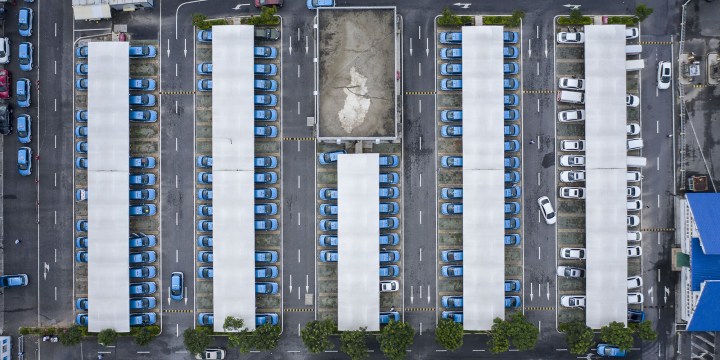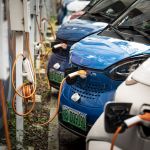CLIMATE CRISIS ROUND-UP
China warns its temperatures are rising faster than the global average

The climate crisis is being felt and dealt with in various ways worldwide. In these climate shorts, we aim to give a round-up of the latest developments and news from across the globe.
China’s average ground temperatures have risen much more quickly than the global average over the past 70 years and will remain “significantly higher” in the future as the challenges of climate change mount, a government official said.
In its annual climate assessment published this week, China’s weather bureau described the country as “a sensitive region in global climate change”, with temperatures rising 0.26°C degrees a decade since 1951, compared to the global average of 0.15°C.
“In the future, the increase in regional average temperatures in China will be significantly higher than the world,” said Yuan Jiashuang, vice-director of China’s National Climate Centre (NCC) at a Wednesday briefing.
He warned that changing weather patterns in China will affect the balance of water resources, make ecosystems more vulnerable and reduce crop yields.
Extreme weather has wreaked havoc in recent weeks, with lengthy heat waves causing droughts and forest fires across the world. Historically high rainfall in some countries has also caused deadly floods.
UN Secretary-General António Guterres warned last month that “no nation is immune” from climate change and said the world now had to choose between “collective action or collective suicide”.
China has already endured weeks of torrid weather, with temperatures reaching in excess of 44°C in southwestern Yunnan and Hebei in the north.
As many as 131 Chinese weather stations have recorded temperatures that equalled or exceeded historical highs, up from 62 for the whole of last year, according to NCC data.
China’s 2021 climate assessment said coastal water levels last year were at their highest since 1980. Glacial retreat also accelerated, active permafrost along the Qinghai-Tibet Highway reached a record high and sea ice continued to decline.
China also recorded a 7.9% increase in vegetation cover in 2021 compared with the 2001-2020 average, and the assessment noted that growth periods for many plants are starting earlier each year. — Reuters
China’s State Grid to start $22bn UHV power line project
State Grid Corporation of China will start building several new long-distance power lines as the nation bolsters its clean energy ambitions while accelerating infrastructure spending to boost a flagging economy.
The world’s biggest utility is beginning work before the end of the year on a 150-billion yuan ($22-billion) project to install ultra-high-voltage power lines, state-owned Xinhua News Agency reported, citing the company. That is expected to bring the company’s total investment in projects in 2022 to a record-high of 1.3-trillion yuan.
State Grid delivers power to more than 1.1 billion people within China and has a bevy of overseas investments. It’s the world leader in UHV lines, which transmit electrons at such high intensity that they can stretch farther without losing power.
The technology is key to President Xi Jinping’s ambition of building a massive fleet of wind and solar plants in the country’s inland deserts and connecting them to power-hungry cities along the coast.
Still, State Grid’s focus on the massive lines has been criticised by analysts who say the utility’s money would be better spent on smaller conduits that would interconnect different regions within China, and that would provide more resilience at the times grids are stretched. Operators have been forced to curtail power to large users in some provinces this summer.
State Grid is ramping up investment as China pushes for more infrastructure spending in the second half to shore up economic growth that flagged amid continued pandemic lockdowns.
In a separate statement on its WeChat account, the utility’s chairman Xin Baoan said the company must “deeply understand that accelerating the construction of major projects is a major deployment for expanding investment and stabilising growth.” — Bloomberg
India approves new emissions targets to tackle climate change
India, the world’s third-largest carbon polluter, has finally approved new targets for slashing planet-warming emissions, more than a year after a United Nations deadline for updated commitments.
On Wednesday, the Indian federal cabinet approved the new national emissions pledges, known as Nationally Determined Contributions (NDCs). Prime Minister Narendra Modi announced these goals last year at United Nations climate talks in Glasgow, but they had not been formalised.
The new NDC will commit India to reducing the emissions intensity of its GDP by 45% from its 2005 level in the next 7 years — a 10% increase over its previous 2016 pledge.
India will also aim to meet half of its energy demands from renewable sources, such as solar and wind, by 2030. This, too, is a boost over its previous target of 40%, which the government said it had achieved in December 2021.
India’s commitment to reducing emissions is more than its expected fair share and a welcome step, said Sanjay Vashist, director of Climate Action Network South Asia, a network of not-for-profit organisations.
“The ambition shown by India is the role expected from all developed countries that have so far worked only to shift the responsibility of greenhouse gas reductions on developing countries,” he told Reuters.
Under the 2015 UN Paris Agreement, parties are required to update their long-term climate goals every five years and are urged to show greater ambition as the impacts of climate change worsen.
“The decision on enhanced NDCs demonstrates India’s commitment at the highest level for decoupling of economic growth from greenhouse gas emissions,” a government statement said.
The updated NDC will now be submitted to the United Nations Framework Convention on Climate Change.
India, which falls only behind China and the United States in emissions, is the last of the world’s five largest emitters to produce new targets.
The government has also said it will aim for net zero emissions by 2070 — 20 years later than what climate scientists say is needed.
India was condemned at the 2021 UN climate summit for its attempts to water down language on reducing reliance on coal. — Reuters
Top South Korean polluter switching to plastics from coal
One of the most polluting companies in South Korea is seeking to reduce emissions by using waste plastic to fire its cement kilns instead of coal, a practice that has come under question in other parts of the world.
Ssangyong C&E Company, the nation’s biggest cement maker, is burning 3,000 tons of synthetic resin waste from used plastics, textiles and tyres per day to run its plant in Donghae on South Korea’s east coast. The firm says the move has reduced its coal use by about 30%, though gross carbon emissions have fallen only 3.3% from 2018 levels.
Korean cement makers are under increasing pressure to reduce their environmental impact as part of the nation’s goal to lower emissions by 40% from 2018 levels by 2030.
Ssangyong emitted 9.9 million tons of CO2 equivalent in 2020, the fourth-largest amount among Korea’s industrial emitters, according to David Kang, an analyst at BloombergNEF. The industry emits about 10% of total carbons generated by Korean industry, one of the three dirtiest sectors, along with steel and petrochemicals, according to the Korean trade ministry.
As part of that target, cement makers will have to replace 36% of coal usage with waste to cut their emissions by 12% by 2030. Ssangyong C&E has ambitions to become coal-free by 2030, by switching to what it calls circular resources — or waste.
Critics of waste-to-energy practices, however, say that burning plastic still produces carbon dioxide emissions that accelerate global warming.
Ssangyong C&E said its kilns, which reach up to 2,000°C, can “significantly trim” emissions and there’s no impact on people’s health and the environment.
“Saying cement makers are using waste for fuel so they are going green could make consumers misunderstand the truth,” said Noh Woong-rae, an opposition lawmaker who is pushing for legislation in Korea to make the industry disclose the materials used for fuel.
South Korean cement makers use 88 kinds of waste for fuel, more than the 34 allowed in the US, 25 in Germany and 20 in Japan. The nation also lacks regulations to monitor heavy metals, Noh said. Cement makers “should consider the impact on people’s health, not just recycling resources”, he said.
Ssangyong C&E is controlled by Korean buyout firm Hahn & Co., which has invested around 478 billion won ($363-million) on facilities that use waste plastic for fuel, a waste heat-recovery system, an energy storage system, and buying 10 waste suppliers to secure supplies of garbage to burn. — Bloomberg DM/OBP





















 Become an Insider
Become an Insider
Comments - Please login in order to comment.